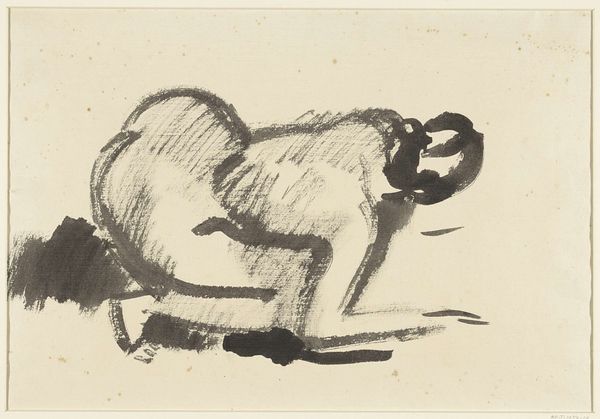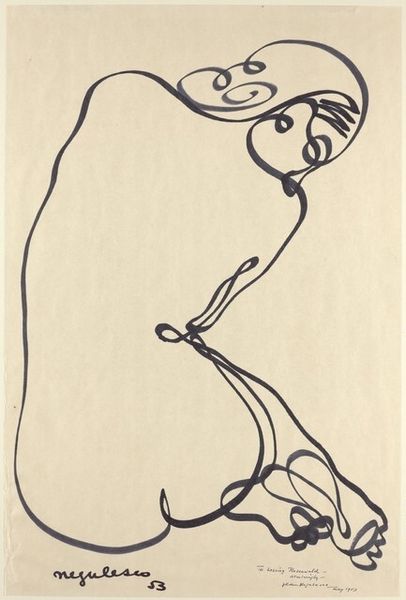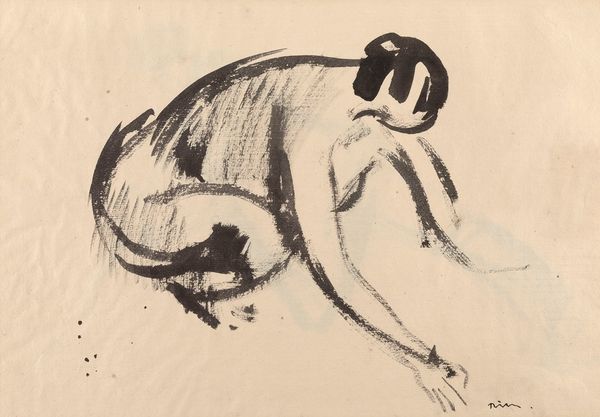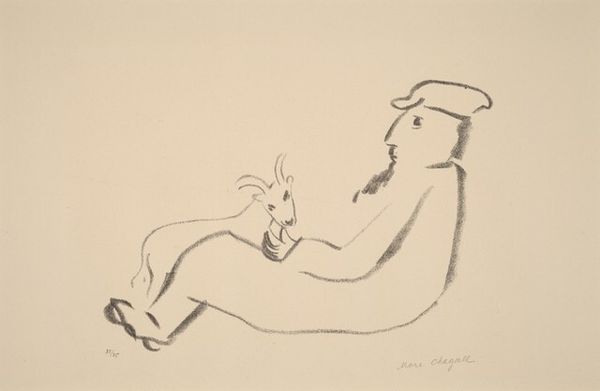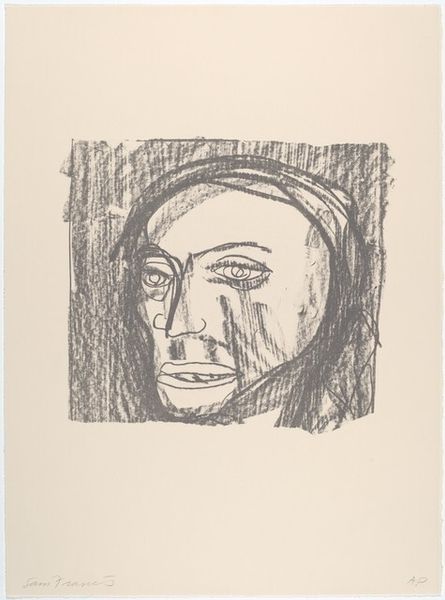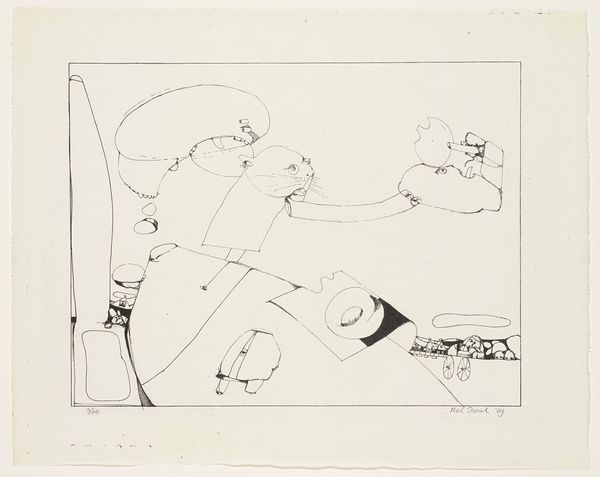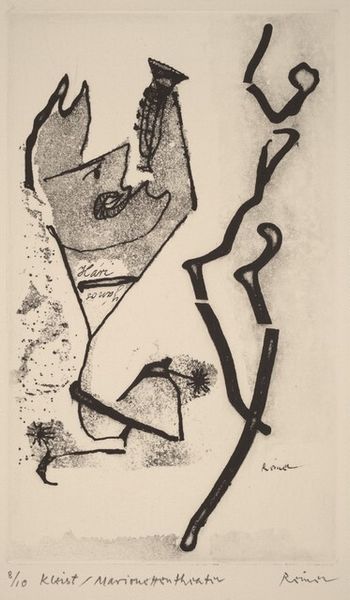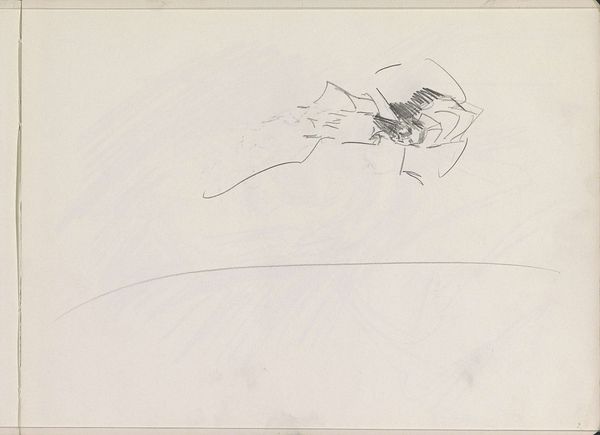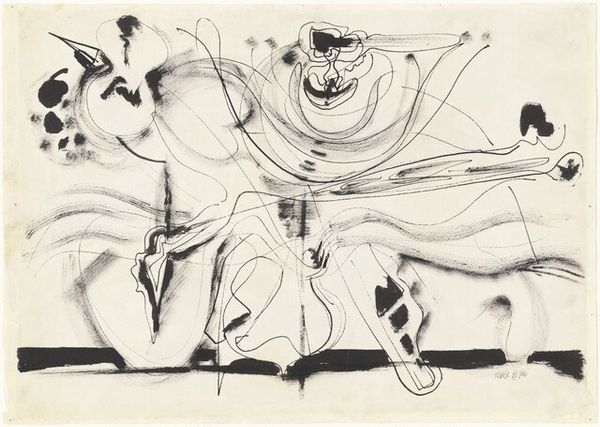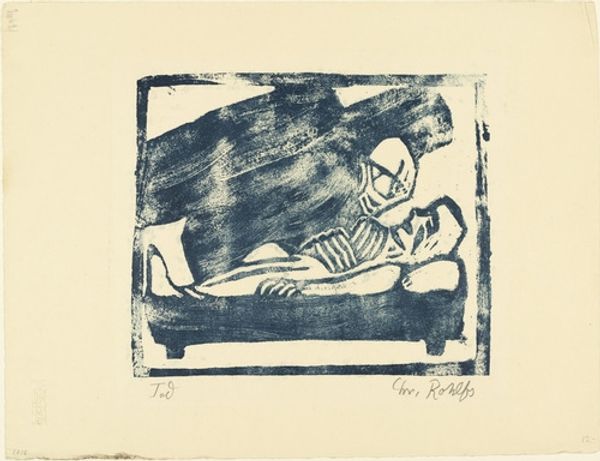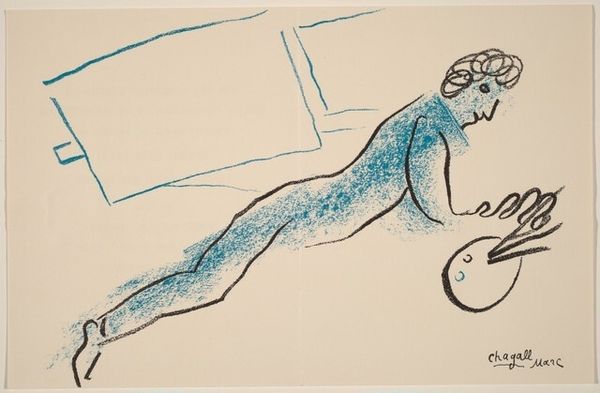
drawing, print, graphite
#
portrait
#
drawing
#
cubism
#
ink drawing
# print
#
pen sketch
#
pencil sketch
#
figuration
#
graphite
Dimensions: sheet: 22.5 x 27.8 cm (8 7/8 x 10 15/16 in.)
Copyright: National Gallery of Art: CC0 1.0
Curator: Welcome. Before us is Marc Chagall's "Boots," a drawing made sometime between 1922 and 1923. It appears to be graphite, perhaps with some ink detailing. Editor: It’s stark. Bleak, even. The limited palette emphasizes the disjointed nature of the figure, with that absurd bend at the torso. It has an unsettling feeling. Curator: Precisely. Notice how Chagall utilizes cubist strategies of fragmentation, particularly in the rendering of the head and torso. The implied lines create shifting planes of vision, complicating our understanding of the subject. Editor: The boots anchor it all though, don’t they? They're rendered with much heavier lines than anything else, making them the material base of this fractured existence. It speaks to the labor and grounding influence boots could have in that period. Curator: Indeed. They serve as a visual anchor and create a weighty foundation for the more ephemeral, floating elements of the figure, like the pointing hand. It's almost an exercise in surrealist figuration, bending space and perspective to hint at deeper psychic realities. Editor: But look at the table – a carefully delineated object set off at a curious angle with an object on it perhaps representing a filleted fish? Is this table a place of refuge, or further surreal juxtaposition? Is this pointing man bringing fish, or being driven away? Curator: Consider the artist's biography: these works were created around the time of his return to and permanent departure from Russia after the October Revolution, marked by loss and dispossession. "Boots," with its stark contrasts and precarious composition, could reflect Chagall's experience of a world turned upside down, or even the plight of Jewish communities across Eastern Europe at that time. Editor: That biographical context illuminates the figure's contorted posture – perhaps suggesting someone physically weighed down by circumstance but, it still doesn’t quite communicate all the layers the fish alludes to. Curator: Thank you. Through formal analysis, contextualization, and close attention to Chagall's distinctive approach, we start to grasp something about this compelling visual document and its historical moment. Editor: This piece makes me appreciate the role of rudimentary material objects within personal and societal narratives and that materiality isn’t so ‘simple’. Thanks.
Comments
No comments
Be the first to comment and join the conversation on the ultimate creative platform.
